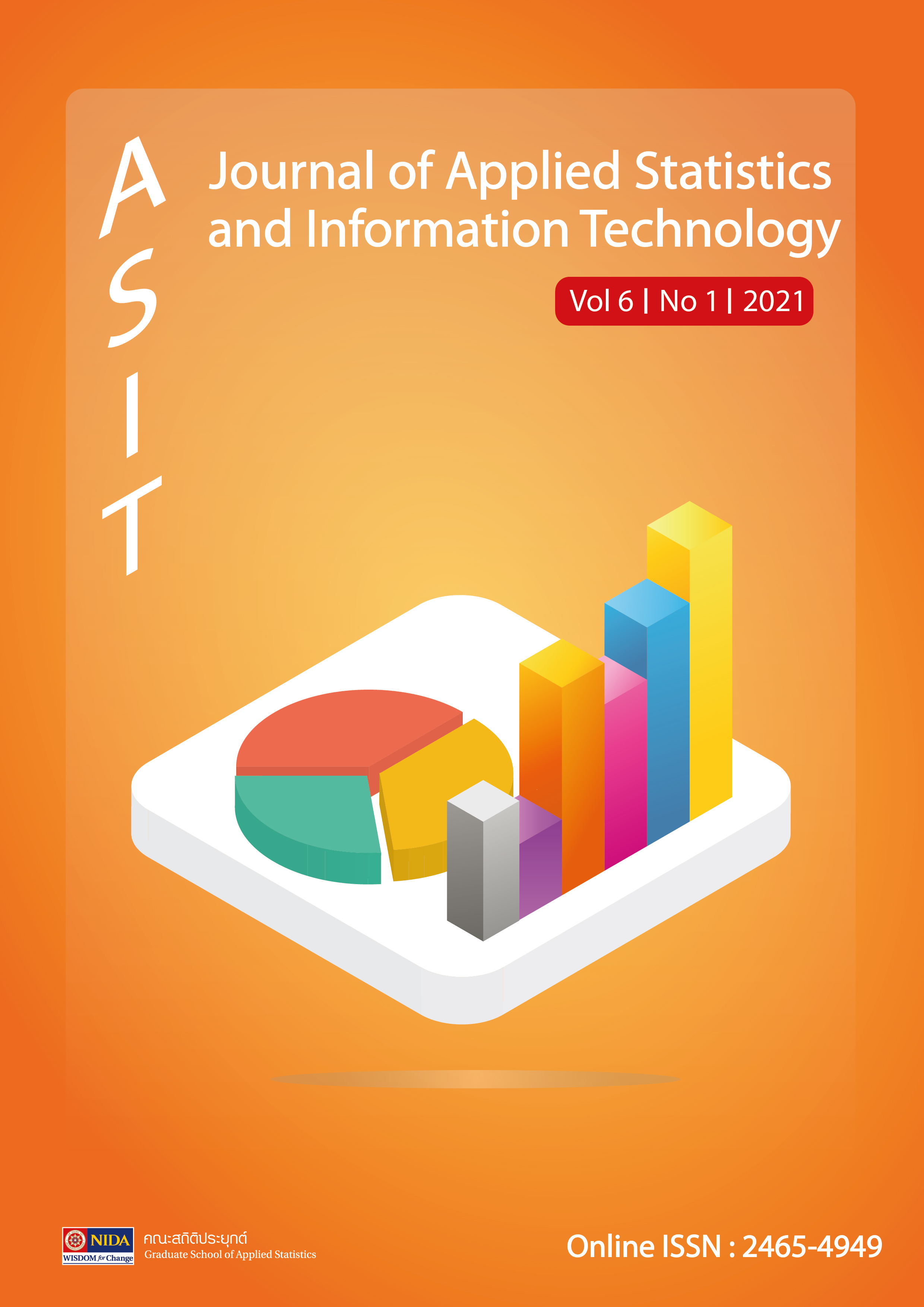Product Pooling for Cartons packaging Materials and Can Order Policy for Scotch Tapes: Case Study of the Instant Noodle Manufacturing Company in Thailand
Abstract
In this case study, the company faces difficulties in managing inventory of packaging materials: Boxes are large and bulky, so the warehouse capacity is reached. This study aims to propose a new inventory policy to reduce the storage area and reduce the inventory cost. Nine types of boxes and one type of scotch tape are considered. Their demand type is identified, and an appropriate inventory policy is constructed based on demand forecast from 2017-2018 historical data. The proposed policies are applied to the actual demand in 2019. In the first policy, the number of items remains the same, but the new reorder points are calculated. In the second policy, all nine box types of boxes are pooled together, reducing the number of types. Specifically, for the Policy 1, the continuous review system is implemented for boxes, whereas the periodic review system is implemented for scotch tape. The order quantities for boxes are calculated based on either the EOQ model or the dynamic lot sizing model. For the Policy 2, two common boxes are used, and their order quantities are calculated based on the EOQ model. Different colors of scotch tape are used in differentiate different taste of the finished goods. Scotch tapes with nine colors are managed using the can-order policy. The result reveals that under Policy 1, the average number of pallets stored in the warehouse increases by 17 patters, the average total cost decreases by 89,151.40 THB/year, and the fill rate is equal to 99.3%. Under Policy 2, the average number of pallets decreases by 24 patters, the average total cost decreases by 2,352,197.91 THB/year, and the fill rate is 97.5%. Both policies lead to savings in inventory cost. Nevertheless, Policy2 is more suitable than Policy1, since it reduces the warehouse space, and the cost saving is significant.
References
ณัฐพล สันแก้ว. 2562. การกำหนดนโยบายสินค้าคงคลังแบบเติมเต็มร่วมกันหลายรายการโดยผู้ผลิตจัดส่งแบบเต็มคันรถ. กรณีศึกษา บริษัทจำหน่ายอุปกรณ์สำนักงานทาง E-Commerce แห่งหนึ่ง. (การจัดการโลจิสติกส์) การค้นคว้าอิสระวิทยาศาสตรมหาบัณฑิต) คณะสถิติประยุกต์ สถาบันบัณฑิตพัฒนบริหารศาสตร์.
นิรชร วะชุม. (2559). การวิเคราะห์หาจุดสั่งซื้อและปริมาณการสั่งซื้อที่เหมาะสมการสั่งซื้อถ่านหิน กรณีศึกษา บริษัทอุตสาหกรรมปูนซีเมนต์ของบริษัทแห่งหนึ่ง. (การจัดการโลจิสติกส์)การค้นคว้าอิสระวิทยาศาสตรมหาบัณฑิต คณะสถิติประยุกต์ สถาบันบัณฑิตพัฒนบริหารศาสตร์.
อัญชลี แซ่เจียม. 2561. การกำหนดระดับสินค้าคงคลังที่เหมาะสม. กรณีศึกษาบริษัทผู้ผลิตสารเคลือบผิวแห่งหนึ่ง. (การจัดการโลจิสติกส์) การค้นคว้าอิสระวิทยาศาสตรมหาบัณฑิต คณะสถิติประยุกต์ สถาบันบัณฑิตพัฒนบริหารศาสตร์.
Axsater, S. (2006). Inventory Control. Second Edition, New York: Springer.
Cachon, G. and Terwiesch, C. (2009). Matching Supply with Demand: Introduction to Operations Management. New York: McGraw-Hill.
Hyndman, R. J. & Athanasopoulos, G. (2018). Forecasting: Principles and Practices. Second Edition, Middletown, DE: OText.
Love, Stephen F. (1979). Inventory Control. New York: McGraw-Hill.
Silver, E. A., D. F. Pyke, & R. Peterson. (1998). Inventory Management and Production Planning and Scheduling. New York: John Wiley & Sons, Inc.
Syntetos, A., Boylan, J. E. & Croston J. D. (2005). On the categorization of demand patterns. Journal of the Operational Research Society, 56(5), 495-503.
Downloads
Published
How to Cite
Issue
Section
License
เนื้อหาและข้อมูลที่ปรากฏในบทความที่ตีพิมพ์ในวารสารสถิติประยุกต์และเทคโนโลยีสารสนเทศถือเป็นความคิดเห็นส่วนบุคคลของผู้เขียนแต่ละท่าน ความผิดพลาดของข้อความและผลที่อาจเกิดจากนำข้อความเหล่านั้นไปใช้ผู้เขียนบทความจะเป็นผู้รับผิดชอบแต่เพียงผู้เดียว บทความ ข้อมูล เนื้อหา รูปภาพ ฯลฯ ที่ได้รับการตีพิมพ์ในวารสารถือเป็นลิขสิทธิ์ของวารสาร หากบุคคลหรือหน่วยงานใดต้องการนำทั้งหมดหรือส่วนหนึ่งส่วนใดไปเผยแพร่ต่อหรือเพื่อกระทำการใดๆ จะต้องได้รับอนุญาตเป็นลายลักอักษรณ์จากวารสาร ก่อนเท่านั้น



